Superb ceramic sculpture depicting a refugee or wanderer, painfully carrying a chest on his back to contain everything he owns.
The subject is inspired by the late 19th cty artistic movement of Realism, showing and denouncing the harsh social condition of a part of the population ("the working classes"). We can compare this work for example to the novels of Emile ZOLA and more particularly to other sculptures (in bronze, but also some produced in ceramic in Sèvres) by Jules DALOU (1838-1902): the digger leaning on his shovel, the return of the hay, the baler
or even Ernest WITTMANN (1846-1921), having collaborated with Mougin brothers from l'Ecole de Nancy, then in their workshop in Lunéville: The refugees, the vagabond or even the blacksmith's rest
More than similarity of the subjects, each time the conflicting position of bodies emphasizes in a mannerist way the effort and suffering of the characters.
Please check on last photo several ceramics with very similar themes from these 2 artist.
We can guess here the determined and voluntary expression of our character, nevertheless bent under his heavy burden, but his walking position, very oblique, also underlines the difficulty of his progress under the weight of his chest. The sculpture is very "raw" or primitive style with the traces of its author's modeling largely apparent, thus emphasizing the ceramic creation and not just its subject. At the same time, it also gives the subject a living and instantaneous side, in movement, and very present for its viewer.
Very nice enamel, with this flamed sandstone covered, brown with delicate deep and nuanced midnight blue reflections, almost iridescent.
"Flamed stoneware is made from a clay fired at a very high temperature - from approximately 1200 to 1350 °C, and which takes on a fairly dark color when fired, between gray and brown. The result allows a very great resistance. After a first firing, the pieces can be covered with several layers of enamel of different shades before being put back in oven. We then obtain metallic and changing reflections which make each piece unique."
This work is signed on the back of the base but the inscription is unfortunately illegible and the attribution remains to be identified: "J Laq"... or "J Loq...?"
Thanks per advance for any help you could bring me with your knowledge regarding the identification of this sculptor or ceramist.
The inscription of a hollow capital "A" on the side of the base, in the corner close to the signature, indicate, according to the standard, that it is anumbered piece reserved for the artist himself (artist's proof). We can therefore imagine a limited edition series, for which I have not found any identification or information.
The enamel somewhat resembles the later productions of the Renault factory in Argent sur Sauldre (Cher, Center of France), but the colors here are more subtle and nuanced. Terracotta is beige and dense.
Dimensions
19cm height *
13cm width *
12cm depth
Perfect condition (note a tiny original cooking fel on the back)
Very nice enamel and very expressive sculpture.











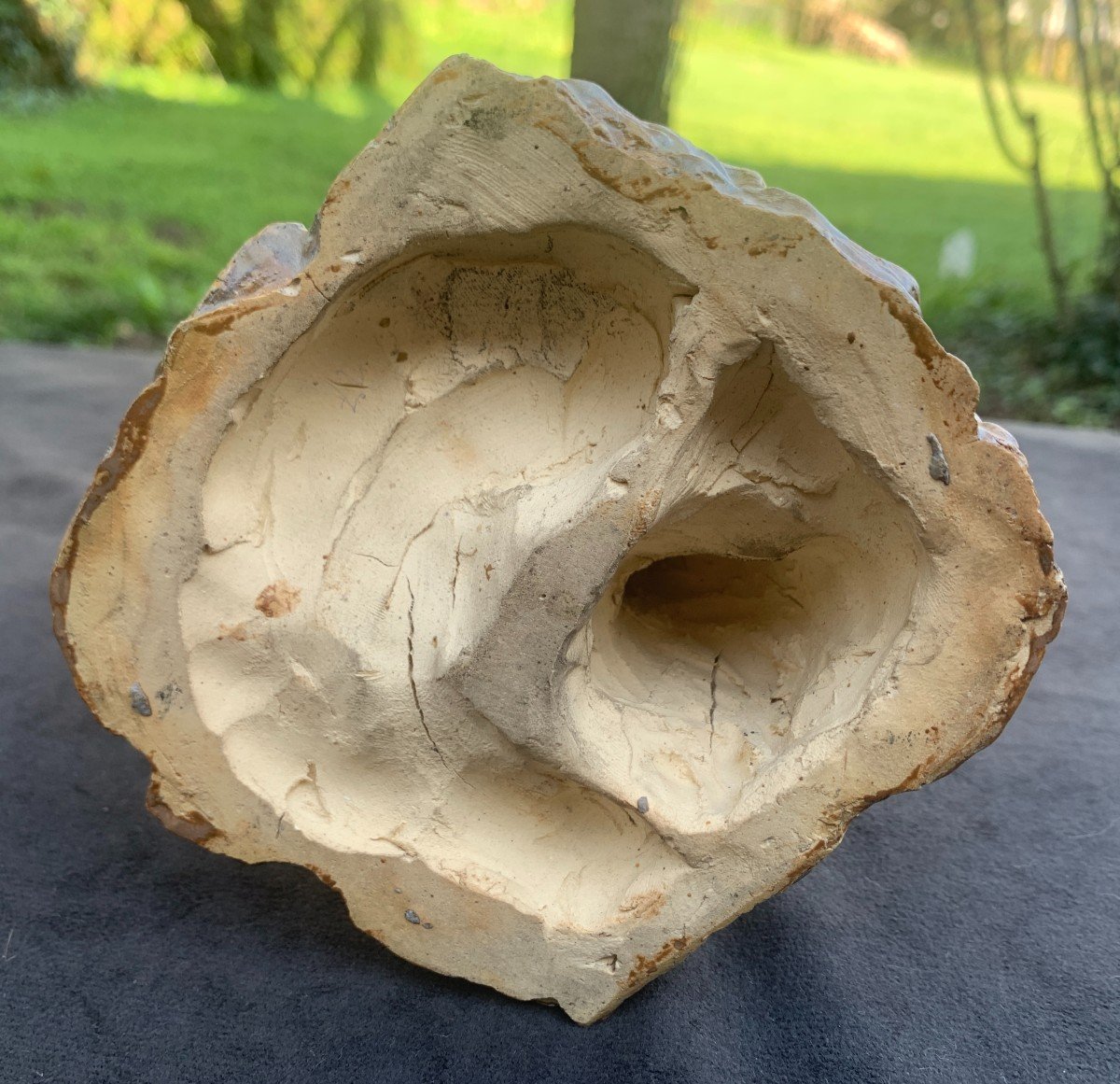
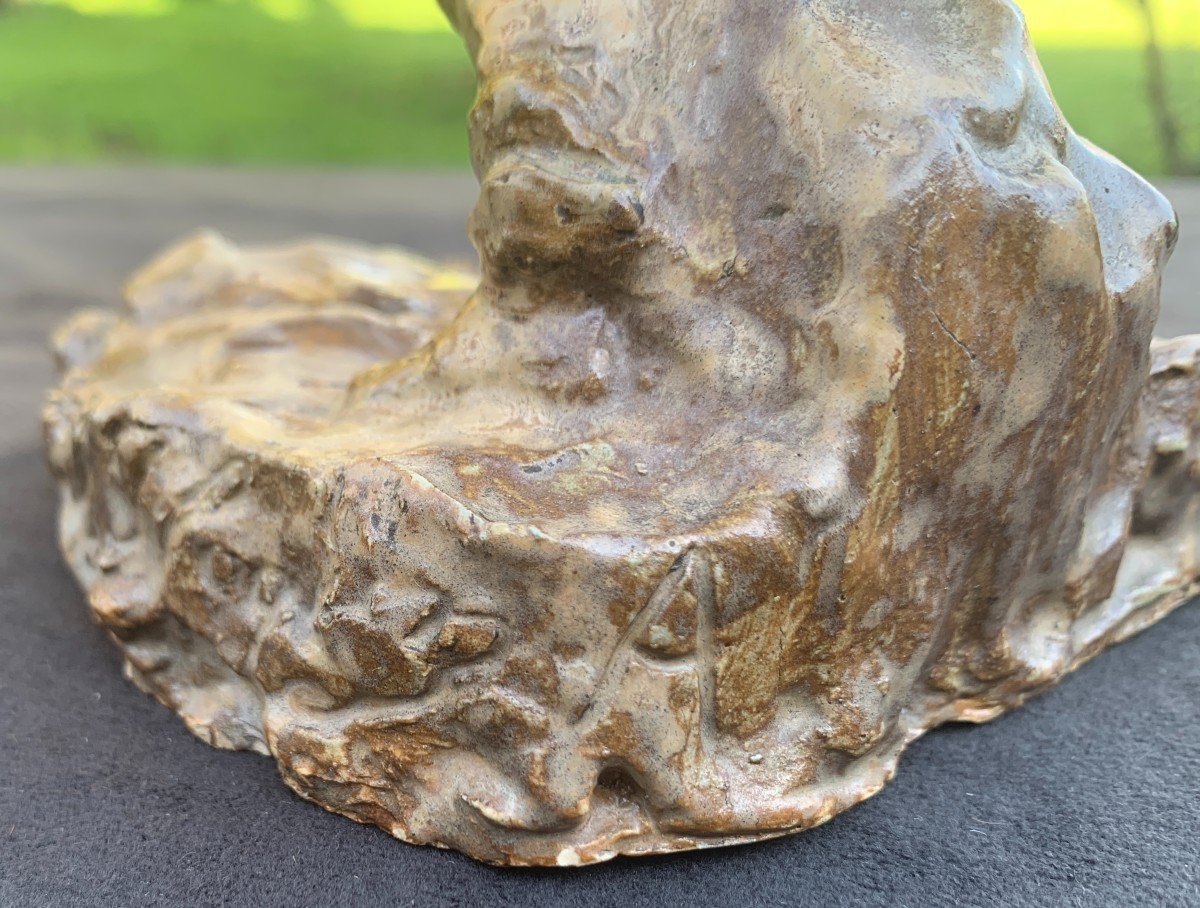
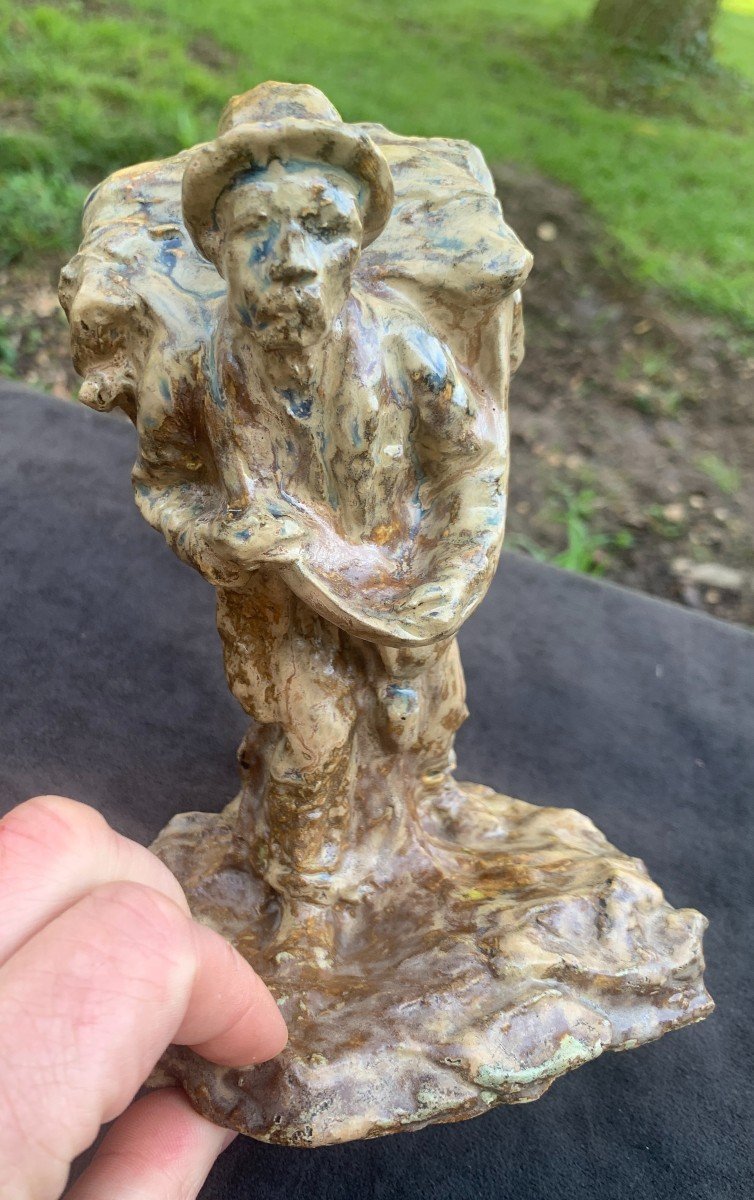
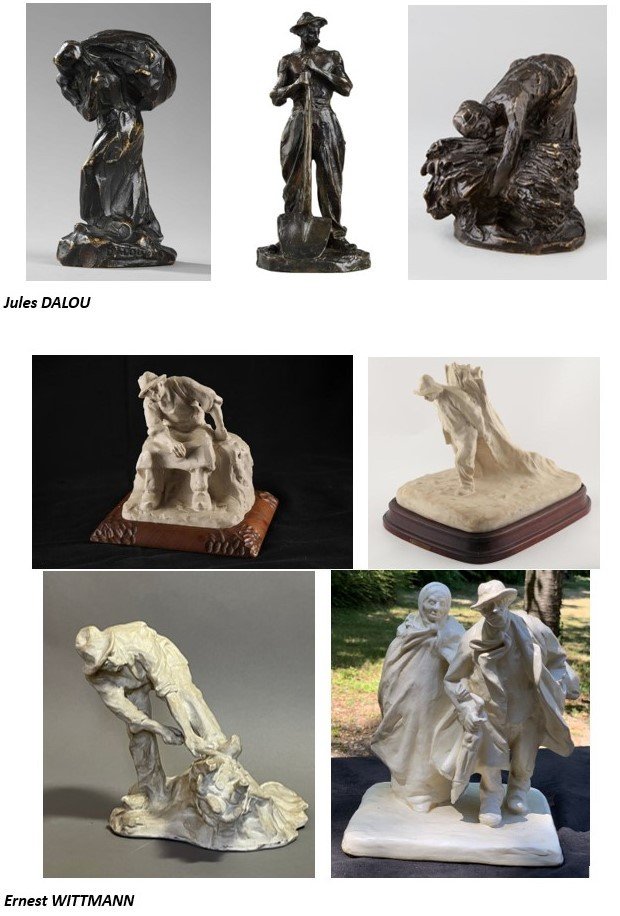


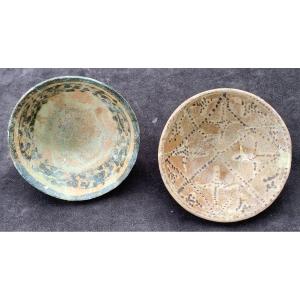
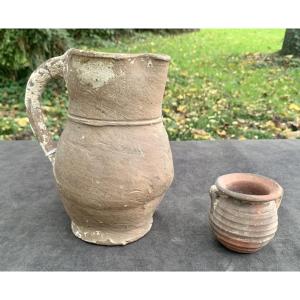











 Le Magazine de PROANTIC
Le Magazine de PROANTIC TRÉSORS Magazine
TRÉSORS Magazine Rivista Artiquariato
Rivista Artiquariato
